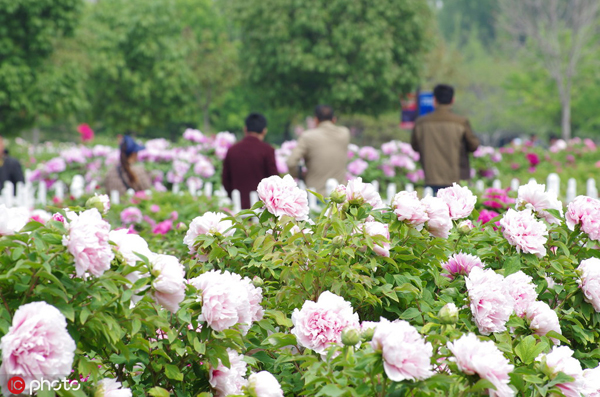Events in Shandong

4. International Peony Cultural Tourism Festival in Heze
The International Peony Cultural Tourism Festival has been held annually in Heze, since 1992 under the approval of the State Council. Heze, a city in Shandong, was named the "Peony Capital" by the China Flower Association in 2012. Its cultivation of peonies, which represent elegance and nobility, dates back 1,400 years.
This year's festival opened in Heze on April 12, with more than 1,000 varieties of peonies on display, covering a total area of 486,000 mu (32,400 hectares). Four forums and an international peony industry expo took place at the same time, attracting dozens of domestic and foreign experts from the Netherlands, Belgium, the United States, France, Japan, South Korea, and Israel.
The festival has been boosting the development of the city's floriculture industry centered on peonies. To date, the city is home to more than 240 enterprises involved in the production, processing and sales of peonies. It has become the country's largest export base of peony, and the world's largest peony breeding and scientific research base. In 2018, the total output value of the city's peony industry exceeded 8 billion yuan ($1.16 billion).

5. Games of Shandong
The Games of Shandong, the largest of its kind in the province, were first held in Jinan in 1950 and became a quadrennial event in 1998. The 24th Games of Shandong were hosted by Qingdao in 2018.
The event, complying with the national mass fitness program, is beneficial to teenagers' health, to selecting athletes for international competitions, and to promoting the coordinated development of both recreational and competitive sports.
6. Dongyue Temple Fair
Dongyue Temple Fair, or Mount Tai Temple Fair, is held annually at Dai Temple in Tai'an, Shandong province.
The temple fair can be traced to the late Tang Dynasty (618-907) and reached its heyday during the Ming Dynasty (1368-1644). It developed from a worship ceremony for the gods of Mount Tai into a folk activity celebrating food, accommodation, transportation, tourism, entertainment, shopping and religious culture.
As an indispensable part of traditional Chinese culture, the event was included in the second batch of national intangible cultural heritages released by the State Council in June 2008.
MOST POPULAR
- 1 China to continue opening up its mega-market to world: premier
- 2 Policies concerning expats, foreign enterprises in November 2025
- 3 China to enhance convenience for inbound tourism: minister
- 4 Departure tax refund applications surge 285% as inbound tourism rebounds
- 5 China's foreign trade up 3.6% in first 11 months of 2025







